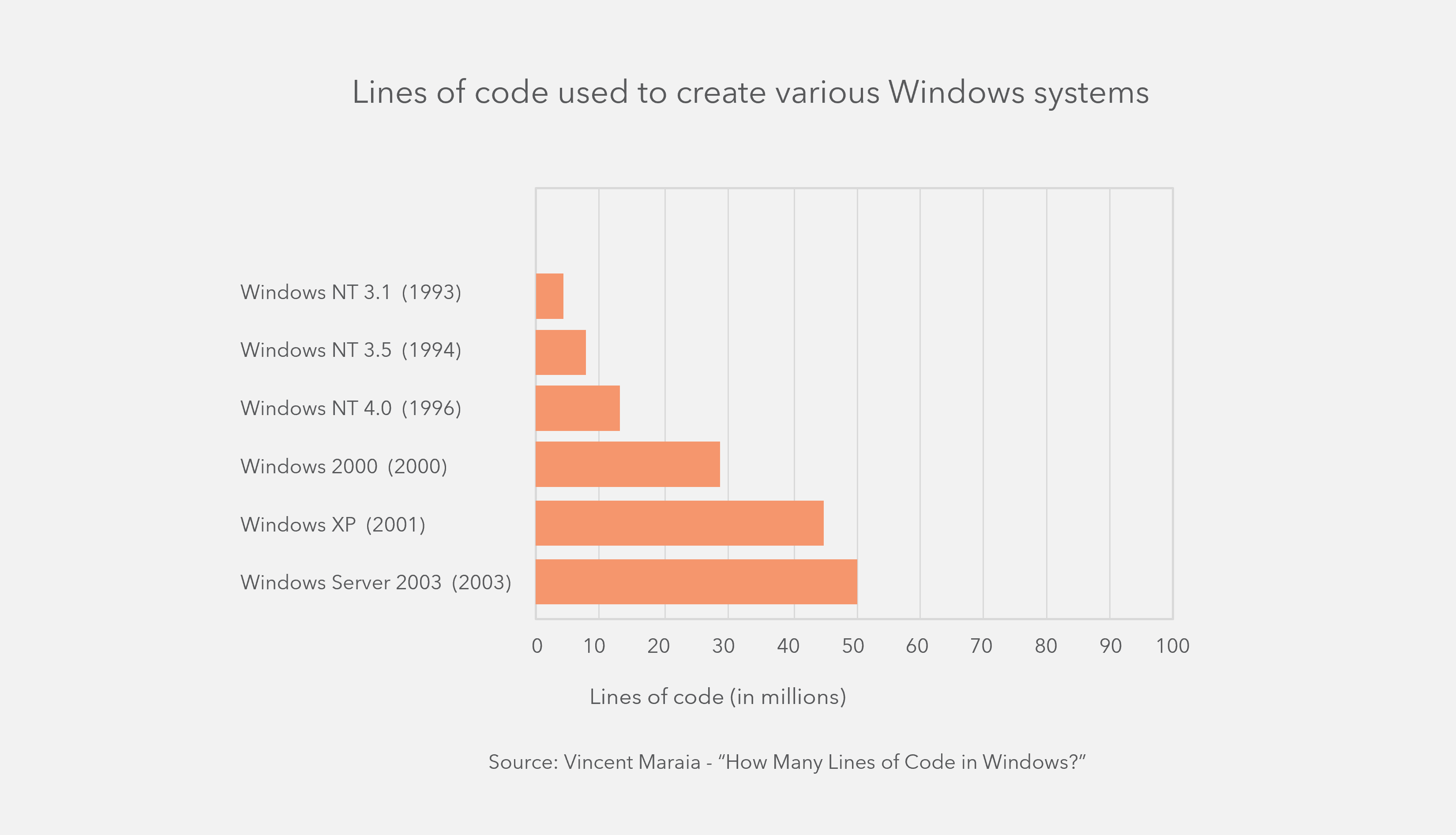How software has evolved over the years
As the complexity of modern solutions increases, not only does the challenge for software developers grow, but so do the expectations for software testers. Although values such as 'Lines of Code' are not universally meaningful metrics, the following graph shows well where the journey is heading.

In the early days of computer technology, programs were relatively simple and straightforward. However, as technology advanced and software applications became more powerful, the size of code bases increased significantly. This is not bad per se, but it does provide new challenges.
Increased complexity
As software has evolved, so has its complexity. Software systems now encompass complex architectures, sophisticated algorithms, and diverse integrations with various platforms and technologies. The demand for advanced functionalities, seamless user experiences, and robust security measures has led to the development of complex software applications. Managing this complexity requires careful design, modularization and the adoption of architectural patterns to ensure maintainability and scalability.
More bugs in real numbers
While software has become more sophisticated and powerful, the presence of bugs remains a challenge. As software grows in size and complexity, the potential for defects and errors also increases. The sheer volume of code, coupled with interdependencies between modules and integration with external components, introduces a higher likelihood of bugs. Additionally, the demand for rapid development and shorter release cycles may put pressure on thorough testing and quality assurance practices, leading to an increased number of bugs making their way into production.

Source: iamthecode.org
The best bug is the one that was never produced
Start testing early
Testing should not be an afterthought, or a rushed activity performed just before release. Starting testing early in the software development process allows for the identification and mitigation of potential issues at their inception. By incorporating testing from the early stages, such as during requirements gathering, design, and development, teams can detect and address problems before they become more complex and costly to fix. Early testing helps identify gaps in requirements, design flaws, and potential issues, ensuring that bugs are caught and resolved early on.

No specification, no testing!
Testing without proper specifications is like navigating a ship without a map. Specifications serve as a blueprint for testing efforts, outlining the expected behaviors, functionalities, and performance of the software. Without specifications, it becomes difficult to define test cases, measure test coverage, or validate the software against the desired outcomes. Comprehensive specifications provide a solid foundation for effective testing, enabling testers to systematically assess the software's compliance with the documented requirements. Or to put it another way: testing without specifications is just playing around with software. It may be fun, but it doesn't do the job.
The advantages of thorough documentation
Thorough documentation goes beyond just specifications. It encompasses design documents, architectural diagrams, user guides and test plans. These documents facilitate collaboration among team members, ensure consistent understanding and provide a reference for future maintenance or enhancements. When testing is backed by comprehensive documentation, it becomes easier to trace the origin of issues, communicate test results and ensure that the software aligns with stakeholders' expectations. Yes, it's true, documenting takes time. But non-existent or incomplete specifications cost more in the end - for example, due to incorrect implementations that have to be undone.
In summary
-
Your customers expect more and more in less and less time. This challenges the entire software development process. Simply speeding up the work will not help.
-
Invest in clarity and completeness of requirements. Because they are the basis for successful and working solutions. Tempting shortcuts can be very expensive in the end.
-
Consider from the beginning how a software solution can be tested in all phases of development. A comprehensive testing strategy helps ensure that the idea becomes reality.
Not sure how to approach all this? We help you from start to rollout with modern and efficient testing methods to protect your brand.
